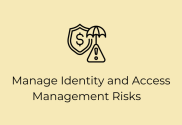
What is Network Security?, Definitions, Types, Tools & Attacks
Network security protects computer networks from unauthorized access, misuse, modification, or destruction. It involves a range of technologies, practices, and policies designed to ensure network resources’ confidentiality, integrity, and availability.
Types of Network Security
Various network security measures can be implemented to protect a computer network from unauthorized access, data breaches, and other security threats. Here are some of the most common types of network security:
- Access Control: Access control restricts access to network resources to authorized users only. This can be achieved through password policies, user authentication mechanisms, and other access control technologies.
- Firewalls: Firewalls are network security devices that monitor and control incoming and outgoing traffic based on predefined security policies. They are designed to prevent unauthorized access to a network and protect against network-based attacks.
- Intrusion Detection and Prevention Systems (IDPS): IDPS are network security devices that monitor network traffic for signs of potential attacks or security breaches. They can detect and prevent various attacks, including malware infections, denial-of-service attacks, and unauthorized access attempts.
- Virtual Private Networks (VPNs): VPNs are encrypted communication channels that allow remote users to access a private network over the internet securely. They are commonly used to provide remote access to corporate networks or to connect geographically dispersed networks.
- Antivirus and anti-malware software: Antivirus and anti-malware software detect and remove viruses, malware, and other malicious software from a network. They can also prevent these threats from entering the web in the first place.
- Encryption: Encryption converts plain text into cipher text using an algorithm and a key. It is used to protect sensitive data from unauthorized access and ensure the confidentiality of network communications.
- Data Backup and Recovery: Data backup and recovery solutions are essential to network security. They protect against data loss due to hardware failures, natural disasters, or other unforeseen events.
- Network Segmentation: Network segmentation involves dividing a network into smaller subnetworks to limit the spread of security breaches and improve network performance.
Network Security Tools
Numerous network security tools on the market can help protect a computer network from various security threats. Here are some of the most popular network security tools:
- Nmap: Nmap is a popular network mapping and port scanning tool used to identify hosts and services on a network and detect vulnerabilities and potential security threats.
- Wireshark: Wireshark is a network protocol analyzer that captures and analyzes real-time network traffic. It is often used to troubleshoot network issues, detect potential security threats, and investigate network attacks.
- Snort: Snort is an open-source intrusion detection and prevention system (IDPS) used to monitor network traffic for signs of potential attacks or security breaches.
- Metasploit: Metasploit is a penetration testing tool used to test a network’s security by simulating real-world attacks. It includes a wide range of exploits and payloads that can be used to identify and exploit vulnerabilities in a network.
- Nessus: Nessus is a vulnerability scanner used to detect and assess potential vulnerabilities in a network. It includes a large database of known vulnerabilities and can be used to generate detailed reports on the security status of a network.
- OpenVAS: OpenVAS is an open-source vulnerability scanner used to identify and assess potential vulnerabilities in a network. It includes a web-based interface, a wide range of scanning options and reporting features.
- Aircrack-ng: Aircrack-ng is a wireless network security tool that monitors and analyzes wireless traffic and cracks WEP and WPA-PSK encryption keys.
- Burp Suite: Burp Suite is a web application security testing tool used to detect and exploit potential vulnerabilities in web applications. It includes many tools and features for manual and automated testing.
- Kali Linux: Kali Linux is a Linux-based operating system specifically designed for penetration testing and network security assessments. Further, it includes a wide range of security tools and features and extensive documentation and support.
Network Security Attacks
Network security attacks are deliberate actions designed to compromise the security of a computer network or its resources. Here are some common types of network security attacks:
-
- Malware: Malware is malicious software designed to damage, disrupt, or gain unauthorized access to a network. Common types of malware include viruses, worms, Trojan horses, and ransomware.
- Denial-of-Service (DoS) Attacks: A DoS attack is designed to disrupt the normal functioning of a network or website by flooding it with traffic or requests. This can cause the network to slow down or crash, making it unavailable to legitimate users.
- Man-in-the-Middle (MitM) Attacks: A MitM attack is an attack in which an attacker intercepts and alters communications between two parties, usually to steal sensitive information.
- Password Attacks: Password attacks are designed to obtain or crack user passwords to gain unauthorized access to a network or its resources. Common types of password attacks include brute-force attacks, dictionary attacks, and phishing attacks.
- Social Engineering Attacks: Social engineering attacks exploit human psychology to trick users into divulging sensitive information or performing actions that compromise network security. Common types of social engineering attacks include phishing, pretexting, and baiting.
- SQL Injection Attacks: A SQL injection attack exploits vulnerabilities in web applications to gain unauthorized access to a database or to execute arbitrary code on a server.
- Cross-site scripting (XSS) attacks: An XSS attack is when an attacker injects malicious code into a web page that other users view. This can allow the attacker to steal sensitive information or execute arbitrary code on a user’s computer.
- Advanced Persistent Threats (APTs): APTs are sophisticated, long-term attacks designed to gain unauthorized access to a network or its resources over an extended period. They often involve multiple stages and techniques, including social engineering, malware, and MitM attacks.
Conclusion
Network security encompasses various measures such as firewalls, intrusion detection and prevention systems, virtual private networks (VPNs), authentication and access control mechanisms, encryption, and data backup and recovery solutions. These measures are implemented to prevent network attacks and promptly detect and respond to security breaches.
I hope the information mentioned above on network security is useful for you!
Also, check Top Network Security Trends.





